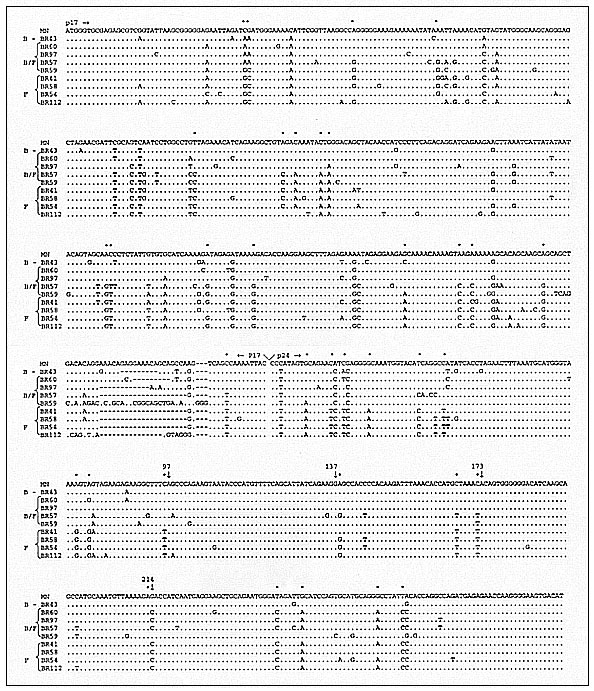Volume 5, Number 1—February 1999
Research
Dual and Recombinant Infections: An Integral Part of the HIV-1 Epidemic in Brazil
Figure 3

Figure 3. Analysis of the putative recombination within the gag region. The aligned sequences were classified into subtype B, subtype F, and recombinant subtype B/F on the basis of linearity of subtype assignment for the p17-p24 gag region. Asterisks show characteristic nucleotide patterns for subtypes B and F sequences; dots represent nucleotides homologous to the MN gag sequence; dashes indicate gaps introduced to maintain the alignment; and arrows indicate the potential recombination regions within the p24 gag fragment. The nucleotide position is marked.
Page created: December 10, 2010
Page updated: December 10, 2010
Page reviewed: December 10, 2010
The conclusions, findings, and opinions expressed by authors contributing to this journal do not necessarily reflect the official position of the U.S. Department of Health and Human Services, the Public Health Service, the Centers for Disease Control and Prevention, or the authors' affiliated institutions. Use of trade names is for identification only and does not imply endorsement by any of the groups named above.